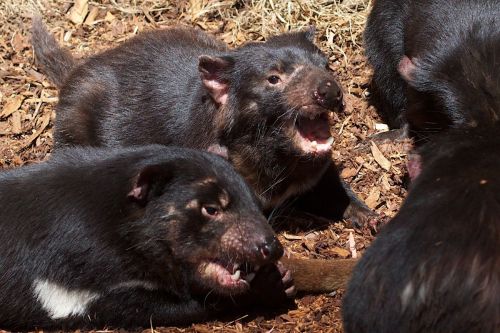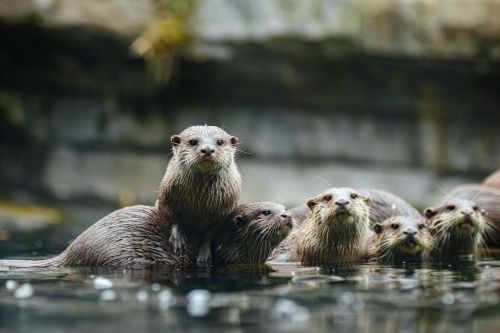Manatees are gentle giants of the seas and oceans that fascinate with their unique nature and importance in aquatic ecosystems. These unique aquatic mammals combine features reminiscent of both land elephants and sea creatures. They are herbivorous species characterized by their peaceful nature and sizable size–they are among the largest marine mammal species. Living mainly in warm waters, they play a vital role in their ecosystems–by influencing the structure and distribution of aquatic plants, manatees influence the diversity of life in seas and oceans.
Their behavior, physiology, and role in the ecosystem are the subject of focus for scientists and nature lovers. Unfortunately, manatees are endangered by habitat loss, poaching, and environmental hazards.
They represent three of four species in the order Sirenia. Manatees occupy a special place in the ecosystem, as they are the only herbivorous aquatic mammals. The Trichechidae include three living species:
They are found in coastal areas of the western Atlantic Ocean, from Florida to northeastern Brazil, and the Amazon and Orinoco basins.
The West Indian manatee inhabits the southeastern coasts of North America and the northwestern coasts of South America. The Amazonian manatee inhabits the Amazon River system, including its estuary, in Colombia, Brazil, Ecuador, and Peru. The West African is found in coastal areas of western Africa and rivers floating into the Atlantic Ocean.
Their body mass ranges from 460 to 1620 kilograms. Their front limbs are transformed into flippers with 2-5 vestigial hooves, which are used for paddling and help serving food into the mouth. The hind limbs are reduced and the tail fin is rounded.
The manatee’s head is poorly defined with small eyes and elongated snout. The upper lip shape facilitates the acquisition of aquatic vegetation (algae, seagrass, freshwater plants), which they consume approximately 50 kilograms daily. Their bodies are sparsely hairy. Female manatees are larger than males.
Young measures one meter, and weighs approximately 30 kilograms. It can feed on plant food at birth.
The young manatee is born with two vestigial incisors it loses as it matures. If the molars fall out, new teeth grow in their place.
Usually, they swim at a speed of 5-8 km/h, but in some cases, they can reach up to 30 km/h. They can stay underwater for up to 15 minutes.
They raise their heads and front fins above the water level, which helps them with breathing, and their wide tails work like ballast to help them swim.
Manatees inhabit shallow coastal, marine, and fresh waters. They often choose areas near power plants where hot water is drained. Although manatees migrate seasonally, some, accustomed to water heated by power plants, have stopped migrating.
Lowering the water temperature to 15 degrees Celsius can be life-threatening for manatees.
As a result, they use relatively little energy for daily activities. This is an adaptation to a low-energy plant-based diet.
They are gentle, slow, and social animals. They establish bonds with each other through touch, verbal communication, and smell. Manatees are strictly aquatic, they are hopeless and vulnerable on land. In captivity, they live up to 10-12,5 years. Their life expectancy in the wild is unknown.
It inhabits the widest range of habitats of all manatee species. It can be found in areas ranging from coastal islands in the Atlantic to rivers in the western Sahel (the geographic area along the southern edge of the Sahara), rivers in the rainforest, etc.
West African manatees have been found as far as 75 kilometers offshore, where there are shallow coastal plains and calm mangrove streams, covered with sea grass.
In addition to humans, they are threatened by sharks, crocodiles, and alligators, but this is rare because they mostly occupy different habitats. In the case of West African manatees, they are mostly threatened by crocodiles.
Humans hunt manatees primarily for their meat. As they are slow swimmers, they are easy prey. Even though manatees are classified as species at risk of extinction, poachers constantly hunt them for meat, oil, bones, and skin.
In Colombia’s Guajira region live the Wayuu Indian people. According to their legends, manatees were originally humans. In their stories, there was a time when a woman of the Wayuu tribe came into conflict with a water spirit and was transformed into a manatee. They believe that manatees are reincarnations of their ancestors. The Seminole Indians of Florida consider manatees to be spirits associated with water and with the ability to predict the future. They were believed to be ancestral spirits that helped the Indians catch fish.
Their mythology features the figure of charming woman Lamia, who gods transformed into a manatee as a punishment for luring and eating children and young males. This folk tale made people associate manatees with evil individuals that bring bad luck.
Pictured as friendly and pleasant, they promote respect for the environment and nature conservation.












